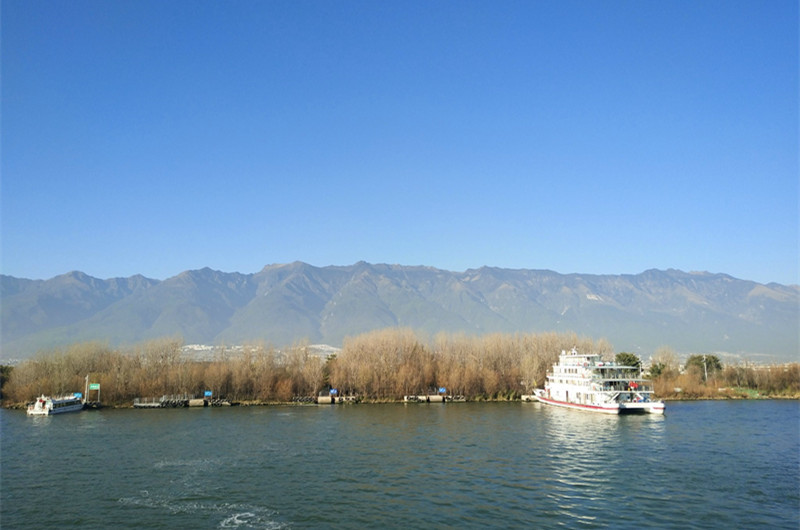Longkan Wharf (龙龛码头) is located on the eastern shore of Erhai Lake (洱海) in Dali City (大理市), Dali Bai Autonomous Prefecture (大理白族自治州), Yunnan Province (云南省). It is about 5 kilometers from Dali Ancient Town (大理古城). The wharf is not only part of the scenic Erhai Ring Road but also a cultural link between the ancient town and surrounding areas.
History and Culture
The history of Longkan Wharf dates back to the Nanzhao Kingdom (南诏) period. It was also one of the filming locations for the movie Breakup Buddies (心花怒放). The site blends natural beauty with rich cultural memories of the Nanzhao era.

Natural Scenery
Longkan Wharf is an excellent place to watch the sunrise and sunset over Erhai Lake. In the early morning, the sun rises from behind Cangshan Mountain (苍山), turning the lake golden, with rippling waves and seagulls in flight. At sunset, light and shadow mingle as the red water cedars reflect on the shimmering lake surface.
Tourist Activities
-
Cycling and Walking: The lakeside path is perfect for strolling. Renting an electric bike (around 30 RMB/day) allows you to explore nearby red cedar forests.
-
Cultural Experiences: Nearby Longxiading Village (龙下登村) is a thousand-year-old Bai (白族) village where visitors can try traditional crafts such as tie-dye and kite-making.
-
Food and Accommodation: Small shops near the wharf serve Yunnan coffee (云南咖啡), Crossing-the-Bridge Rice Noodles (过桥米线), and other local specialties. Staying in a lakeside guesthouse lets you enjoy morning coffee on the balcony while watching the sunrise, and fall asleep to the sound of waves.
Transportation
-
Public Transport: Take the Three Pagodas Line (三塔专线) to Longkan Ecological Park Station (龙龛生态园站), then walk about 1.5 km to the wharf.
-
Driving/Taxi: Navigate directly to Longkan Wharf; parking is available nearby.
-
Electric Bike: Rent one from Dali Ancient Town or Caicun Wharf (才村码头) and ride to Longkan Wharf.
Ticket Information
Longkan Wharf is open to the public free of charge.

 7 Days GolfingTour
7 Days GolfingTour
 8 Days Group Tour
8 Days Group Tour
 8 Days Yunnan Tour
8 Days Yunnan Tour
 7 Days Shangri La Hiking
7 Days Shangri La Hiking
 11 Days Yunnan Tour
11 Days Yunnan Tour
 6 Days Yuanyang Terraces
6 Days Yuanyang Terraces
 11 Days Yunnan Tour
11 Days Yunnan Tour
 8 Days South Yunnan
8 Days South Yunnan
 7 Days Tea Tour
7 Days Tea Tour
 8 Days Muslim Tour
8 Days Muslim Tour
 12 Days Self-Driving
12 Days Self-Driving
 4 Days Haba Climbing
4 Days Haba Climbing
 Tiger Leaping Gorge
Tiger Leaping Gorge
 Stone Forest
Stone Forest
 Yunnan-Tibet
Yunnan-Tibet
 Hani Rice Terraces
Hani Rice Terraces
 Kunming
Kunming
 Lijiang
Lijiang
 Shangri-la
Shangri-la
 Dali
Dali
 XishuangBanna
XishuangBanna
 Honghe
Honghe
 Kunming
Kunming
 Lijiang
Lijiang
 Shangri-la
Shangri-la
 Yuanyang Rice Terraces
Yuanyang Rice Terraces
 Nujiang
Nujiang
 XishuangBanna
XishuangBanna
 Spring City Golf
Spring City Golf
 Snow Mountain Golf
Snow Mountain Golf
 Stone Mountain Golf
Stone Mountain Golf















